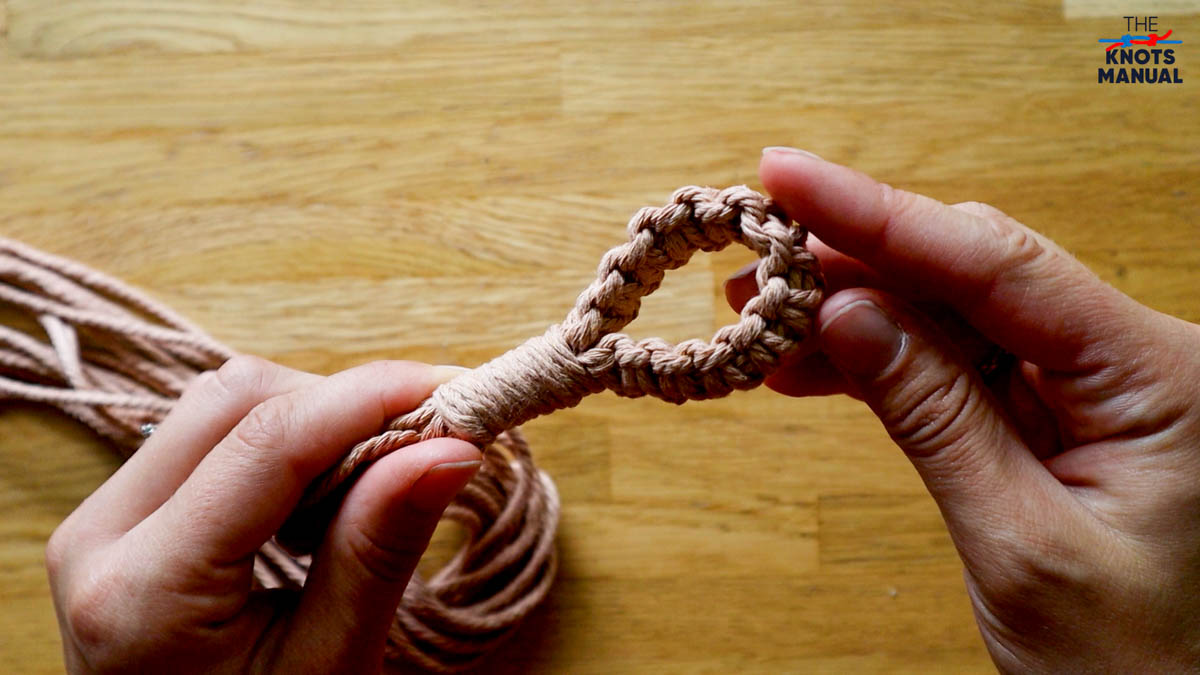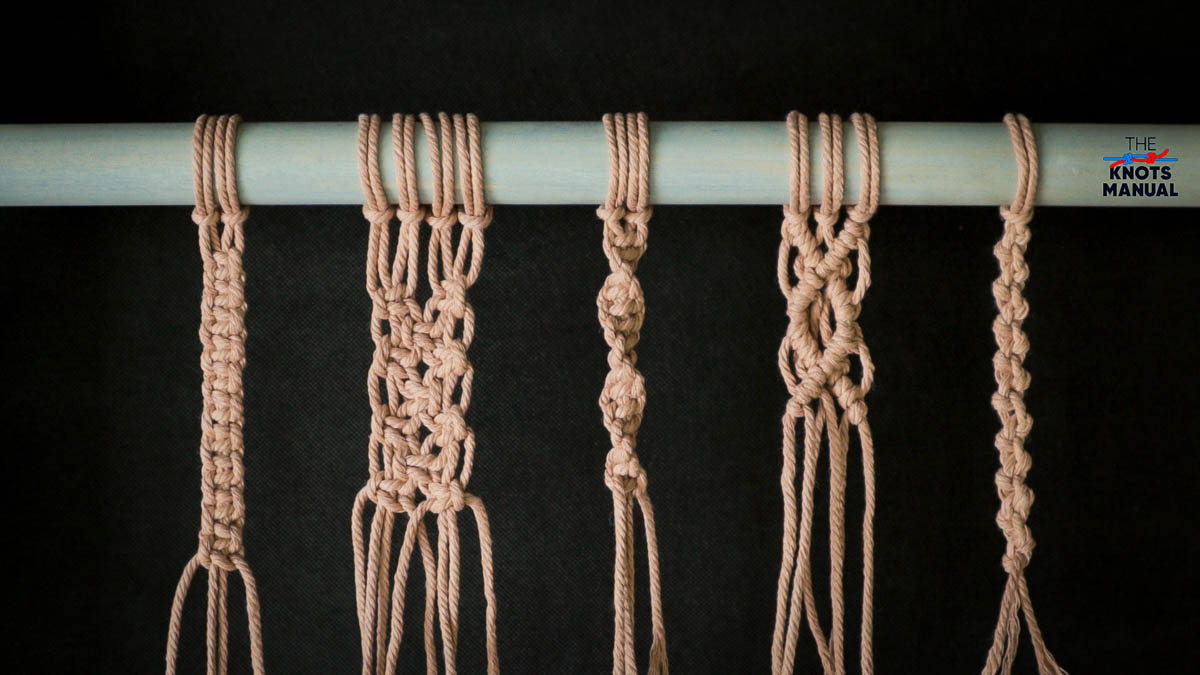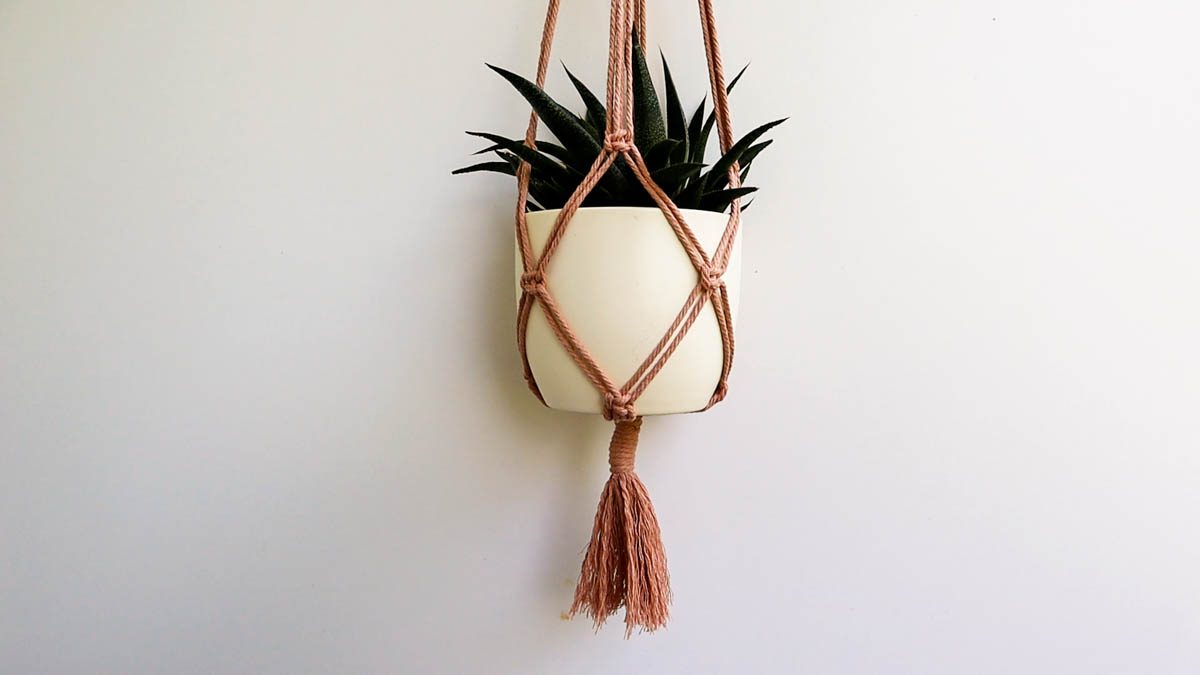Macrame is a crafting technique for making textile items from knots. It differs from crocheting and knitting because it consists 100% of knots, rather than patterns.
Your project doesn’t need to be made from 100% macrame to be considered macrame. Some macrame projects are made only from macrame knots while others incorporate only a few knots. You can combine crocheting, knitting, and weaving with macrame to add an interesting element to your project.

Using macrame you can make various useful textile items, like belts, bags, plant hangers, and different clothing items. It’s also very commonly used for decorative purposes, like creating wall hangings, dream catchers, necklaces, bracelets, and similar items.
Macrame History
Macrame is at least as old as the 13th century when it was popular in Arabic-speaking countries. Some say that macrame may be as old as the Assyrian and Babylonian civilizations but there is not much evidence to back this up.
It is likely that the name “macrame” came from the Arabic word “migramah.” Migramah is a word that means “ornamental fringe.” It’s also possible that the word “macrame” came from the Turkish word “makrama.” Makrama is the word for “towel” or “napkin.”
Medieval Times
Sailors tied knots into their ropes daily, which eventually evolved into macrame as a way to spend their free time. Rather than creating decorative projects, they focused on creating something more useful, like hats, belts, and hammocks.
Macrame came to France in the 1400s and to Italy in the 1500s because of sailors, who shared their knowledge of knot-making as they traveled across the world.
Victorian Era (1850 – 1900)
Macrame reached its peak popularity during the Victorian Era. Women of all classes enjoyed macrame as a way to pass the time while making useful and decorative, items.
The 1970s
The 1970s was a significant point in history for macrame. Artists largely created fashion pieces like vests and belts. Animal-shaped wall hangings were also a huge trend.
The 1970s were the “hippie” era. Many rejected the unethical practices of manufacturers and government officials. Many began making macrame items as a form of protest. It was a way to protest mass-produced products and slave labor.
Macrame Today
Macrame has gained much popularity in the past few years due to YouTube, TikTok, Instagram, and other social media networks. Nowadays, it’s competing with crocheting and knitting in popularity.
Today, many people live stressful lives and are looking for hobbies that don’t involve screens and modern devices. Macrame offers a simple way to relax and stay occupied using only your hands, which is why it’s becoming more are more popular.
Materials Needed For Macrame
You can use any type of rope for macrame, depending on the look and size that you want to achieve. That said, most macrame projects are made using twisted natural rope in 3-5 mm (3/32 – 3/16 inch) thickness.
If you want to achieve a different look, you can also use other materials, like:
- Other natural ropes (hemp, jute, twine, etc.)
- Synthetic braided ropes (nylon, polypropylene, yarn, etc.)
- Leather strips
Tip: Beginners should avoid using yarn, which can be challenging to work with. Most yarn is highly stretchable. The stretchiness causes knots to be smaller than artists often expect.
Other Tools You May Need
Here are some tools and materials that may assist you in various macrame projects:
- Scissors — to cut the rope.
- Tape — to fix the rope to a table, making it easier to work with.
- Measuring tape — to measure how much rope is needed before cutting.
- Dowel rod — often used for wall hangings or plant hangers to hang the artwork.
- Mounting rings — another option for hanging the artwork.
Common Macrame Knots

Although most macrame projects are made using simple and easy-to-learn knots, some involve more complicated knots and patterns. So we suggest learning the most basic macrame knots first and moving on to more complicated ones later.
Here are 10 basic (and common) macrame knots that beginners should learn first:
- Lark’s Head Knot
- Square Knot
- Half Square Knot
- Half Hitch
- Half Knot Spiral
- Double Half Hitch (Clove Hitch)
- Overhand Knot
- Gathering Knot
- Wrapping Knot
- Spiral Knot
Macrame Project Ideas
As a macrame beginner, you should choose something simple to start out with, like creating bracelets, plant hangers, small wall hangings, and keychains. Over time, as you become more experienced, you can experiment with more complicated macrame projects.

Some useful items that you can create using macrame are bags, belts, bookmarks, clothing, hammocks, hanging shelves, jar and pot hangers, tablecloths, and table runners.
Some more decorative projects could be creating macrame coasters, dream catchers, feathers, garlands, headbands, necklaces, earrings, bracelets, keychains, ornaments, tassels, and wall hangings.
As a beginner, it’s easier to follow projects from other people with detailed instructions. As you learn more and more macrame knots, you can start to incorporate them into your own projects to make fully unique pieces.
